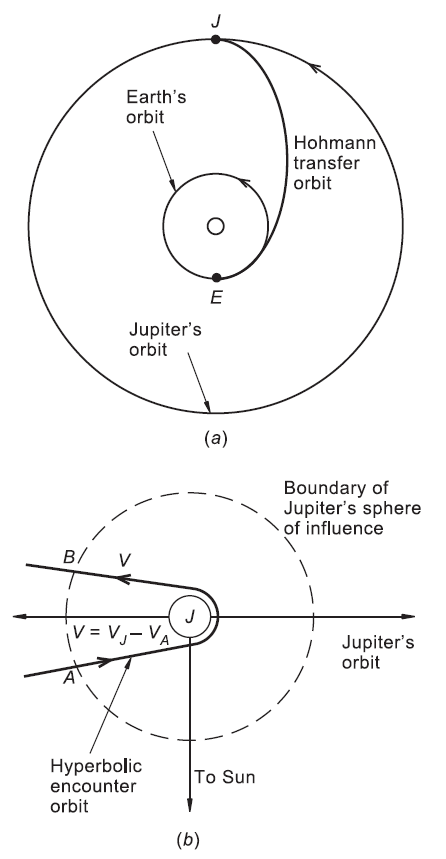
تاريخ الفيزياء

علماء الفيزياء


الفيزياء الكلاسيكية

الميكانيك

الديناميكا الحرارية


الكهربائية والمغناطيسية

الكهربائية

المغناطيسية

الكهرومغناطيسية


علم البصريات

تاريخ علم البصريات

الضوء

مواضيع عامة في علم البصريات

الصوت


الفيزياء الحديثة


النظرية النسبية

النظرية النسبية الخاصة

النظرية النسبية العامة

مواضيع عامة في النظرية النسبية

ميكانيكا الكم

الفيزياء الذرية

الفيزياء الجزيئية


الفيزياء النووية

مواضيع عامة في الفيزياء النووية

النشاط الاشعاعي


فيزياء الحالة الصلبة

الموصلات

أشباه الموصلات

العوازل

مواضيع عامة في الفيزياء الصلبة

فيزياء الجوامد


الليزر

أنواع الليزر

بعض تطبيقات الليزر

مواضيع عامة في الليزر


علم الفلك

تاريخ وعلماء علم الفلك

الثقوب السوداء


المجموعة الشمسية

الشمس

كوكب عطارد

كوكب الزهرة

كوكب الأرض

كوكب المريخ

كوكب المشتري

كوكب زحل

كوكب أورانوس

كوكب نبتون

كوكب بلوتو

القمر

كواكب ومواضيع اخرى

مواضيع عامة في علم الفلك

النجوم

البلازما

الألكترونيات

خواص المادة


الطاقة البديلة

الطاقة الشمسية

مواضيع عامة في الطاقة البديلة

المد والجزر

فيزياء الجسيمات


الفيزياء والعلوم الأخرى

الفيزياء الكيميائية

الفيزياء الرياضية

الفيزياء الحيوية

الفيزياء العامة


مواضيع عامة في الفيزياء

تجارب فيزيائية

مصطلحات وتعاريف فيزيائية

وحدات القياس الفيزيائية

طرائف الفيزياء

مواضيع اخرى
Transfer between planets
المؤلف:
A. Roy, D. Clarke
المصدر:
Astronomy - Principles and Practice 4th ed
الجزء والصفحة:
p 203
16-8-2020
2373
Transfer between planets
In practice, the planets have their own gravitational fields and an interplanetary transfer made by a space-probe is a many-body problem. The concept of a planet’s sphere of influence, first introduced in celestial mechanics, is useful in this type of problem.
The sphere of influence of the planet is the volume of space about the planet, within which it is more useful to consider a satellite or probe to be in orbit about the planet and perturbed by the Sun than to be in orbit about the Sun and perturbed by the planet.
The fact that the planet’s gravitational field is so weak compared to the Sun’s means that its sphere of influence is almost spherical and has a radius rA much smaller than the planet’s heliocentric radius vector rP. It is found that

where m and M are the masses of the planet and Sun respectively.
Table 1. Sphere of influence of the planets.

Table 1 summarizes the relevant information about the planetary spheres of influence. The consequence of the fall-off in intensity of the Sun’s gravitational field with distance from the Sun is evident on comparing the sizes of the spheres of influence of Earth and Pluto. The latter sphere is about four times as large as the former, even though the mass of Earth is about three hundred times that of Pluto.
A spacecraft destined for Mars, say, has a trajectory that begins in the Earth’s sphere of influence. The spacecraft’s rocket engines give it sufficient velocity to boost it to the limits of the Earth’s sphere of influence. It enters interplanetary space with a certain geocentric velocity that, together with the Earth’s own orbital velocity, will put it into the heliocentric transfer orbit required to take it out to the Martian orbit. During this transfer, its orbit will be perturbed only very slightly by the Earth and, as it draws nearer and nearer to Mars, by that planet. Once it enters the Martian sphere of influence, it can be said to be in a solar-perturbed orbit about that planet. In general, unless the vehicle fires its engines, it will not enter a closed satellite orbit about Mars but will swing round the planet in a hyperbolic orbit that will ultimately eject it from the Martian sphere of influence. Its subsequent solar orbit will be quite different from its pre-Martian encounter orbit because of its deep penetration into the Martian sphere of influence. The total energy of its solar orbit may have been increased or decreased by its flypast of Mars.

Figure 1. (a) Hohmann transfer orbit of a spacecraft from Earth to Jupiter, the spacecraft entering Jupiter’s sphere of influence. (b) How, in the hyperbolic jovicentric orbit of the spacecraft within Jupiter’s sphere of influence, the spacecraft’s velocity V at A is effectively the exit velocity V at B.
This ability of a planetary flypast to change the energy of a small body in orbit and give it an entirely different heliocentric orbit is not a new phenomenon in celestial mechanics. Cometary orbits have been observed to be drastically changed by close encounters with Jupiter. For example, Comet Brooks (1889V) had its period of revolution shortened from 29 to 7 years by passing so close to Jupiter that it spent two days within the bounds of Jupiter’s satellite system.
 الاكثر قراءة في مواضيع عامة في علم الفلك
الاكثر قراءة في مواضيع عامة في علم الفلك
 اخر الاخبار
اخر الاخبار
اخبار العتبة العباسية المقدسة

الآخبار الصحية















 قسم الشؤون الفكرية يصدر كتاباً يوثق تاريخ السدانة في العتبة العباسية المقدسة
قسم الشؤون الفكرية يصدر كتاباً يوثق تاريخ السدانة في العتبة العباسية المقدسة "المهمة".. إصدار قصصي يوثّق القصص الفائزة في مسابقة فتوى الدفاع المقدسة للقصة القصيرة
"المهمة".. إصدار قصصي يوثّق القصص الفائزة في مسابقة فتوى الدفاع المقدسة للقصة القصيرة (نوافذ).. إصدار أدبي يوثق القصص الفائزة في مسابقة الإمام العسكري (عليه السلام)
(نوافذ).. إصدار أدبي يوثق القصص الفائزة في مسابقة الإمام العسكري (عليه السلام)


















